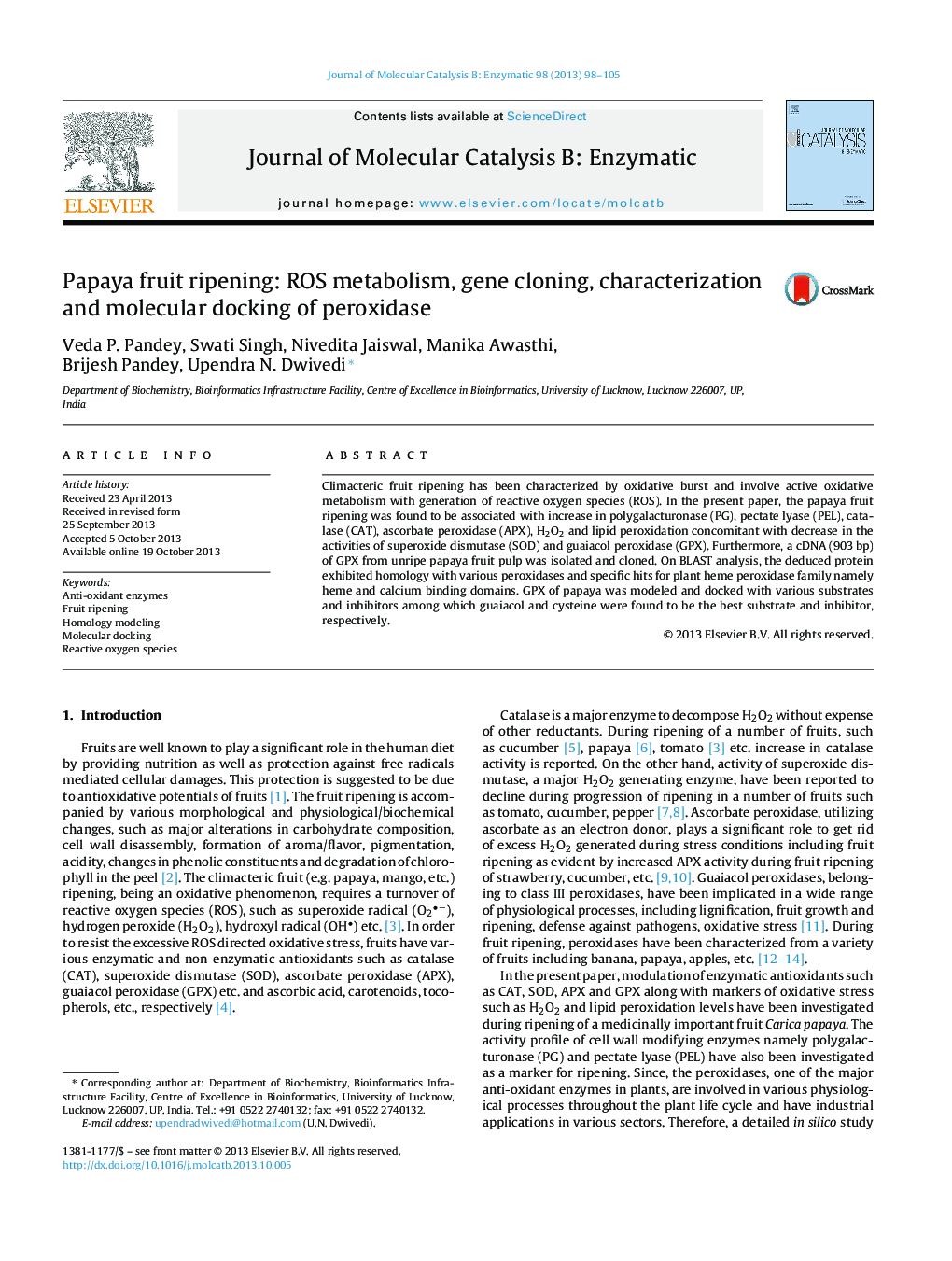| Article ID | Journal | Published Year | Pages | File Type |
|---|---|---|---|---|
| 69816 | Journal of Molecular Catalysis B: Enzymatic | 2013 | 8 Pages |
•Ripening was characterized by decrease in SOD and GPX and increase in of CAT & APX.•cDNA of GPX (903 bp) from unripe papaya fruit pulp was cloned and characterized.•Phylogenetic & BLAST analysis suggested the clone as the member of heme peroxidase.•Molecular docking of GPX was done with various common substrates & inhibitors.•Guaiacol & cysteine were found to be best substrates and inhibitors, respectively.
Climacteric fruit ripening has been characterized by oxidative burst and involve active oxidative metabolism with generation of reactive oxygen species (ROS). In the present paper, the papaya fruit ripening was found to be associated with increase in polygalacturonase (PG), pectate lyase (PEL), catalase (CAT), ascorbate peroxidase (APX), H2O2 and lipid peroxidation concomitant with decrease in the activities of superoxide dismutase (SOD) and guaiacol peroxidase (GPX). Furthermore, a cDNA (903 bp) of GPX from unripe papaya fruit pulp was isolated and cloned. On BLAST analysis, the deduced protein exhibited homology with various peroxidases and specific hits for plant heme peroxidase family namely heme and calcium binding domains. GPX of papaya was modeled and docked with various substrates and inhibitors among which guaiacol and cysteine were found to be the best substrate and inhibitor, respectively.
Graphical abstractFigure optionsDownload full-size imageDownload as PowerPoint slide
